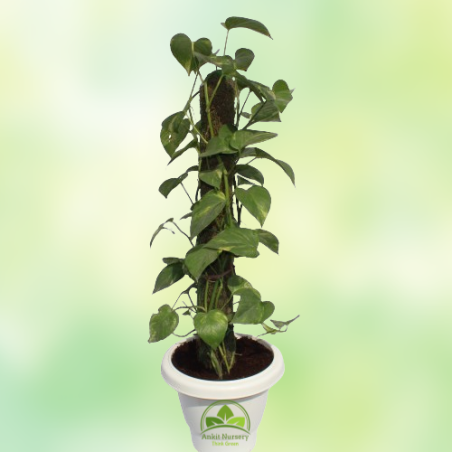
- -10%






The Money Plant, also known as Pilea peperomioides, is a popular houseplant known for its round, coin-shaped leaves and ease of care. Money Plants have round, flat, green leaves that resemble coins, hence the name. The leaves grow on long, thin stems, giving the plant a delicate and elegant appearance.
Money Plants typically reach a height of 12 to 24 inches, though they can grow taller under the right conditions. They have a relatively slow growth rate compared to some other houseplants. Money Plants prefer bright, indirect light. They can tolerate lower light conditions but may become leggy and grow more slowly. Avoid placing them in direct sunlight, as this can scorch their leaves.
Keep the soil consistently moist but not waterlogged. Water the plant when the top inch of soil feels dry to the touch, and allow any excess water to drain away. It's essential to avoid letting the soil become soggy, as this can lead to root rot. Money Plants prefer temperatures between 60-75°F (15-24°C) and moderate to high humidity levels. They can tolerate average indoor humidity but may benefit from occasional misting or placement near a humidifier, especially in dry environments. Use a well-draining potting mix rich in organic matter, such as peat moss or compost. A mix formulated for houseplants or succulents works well for Money Plants.
Feed your Money Plant with a balanced liquid fertilizer diluted to half strength every 4-6 weeks during the growing season (spring and summer). Reduce fertilization in fall and winter when growth slows. Money Plants can be easily propagated from stem cuttings. Simply take a cutting with a few nodes, remove the lower leaves, and place it in a pot with moist potting mix. Keep the soil consistently moist until roots develop.
Prune Money Plants to control their size and shape and remove any dead or yellowing leaves. You can also pinch back the growing tips to encourage bushier growth. Money Plants are not known to be toxic to humans or pets, making them a safe choice for households with children and animals. Overall, Money Plants are attractive and low-maintenance houseplants that can bring a touch of greenery and good fortune to any indoor space. With proper care, they can thrive and be enjoyed for many years.
The Schefflera plant, often referred to as the Umbrella Tree or Schefflera arboricola, is a...
The Snake Plant, scientifically known as Sansevieria trifasciata (formerly classified under...
The Money Plant, also known as Pilea peperomioides, is a popular houseplant known for its...
The term "Pink Syngonium" typically refers to a variety of Syngonium podophyllum, commonly...
The Dracaena Compacta, also known as Dracaena deremensis 'Compacta' or Dwarf Dracaena, is a...
The Dracaena Victoria is a cultivar of the Dracaena fragrans species, commonly known as the...
Kagzi Grafted Lemon Plant, also known as Citrus limon 'Kagzi' or 'Kagzi Nimbu,' is a popular...
The Araucaria plant, also known as the Norfolk Island Pine or simply Araucaria, is a...
Spider Plant (Chlorophytum) scientifically known as Chlorophytum comosum, are popular...
Indoor plants are a great way to bring nature into your home, purify the air, and enhance your...
Philodendron xanadu Seelam Plant is indeed a delightful cultivar known for its lush and...
Dracaena victoria, commonly known as the Victoria plant or Victoria dragon tree, is a popular...
Indoor plants are a great way to bring nature into your home, purify the air, and enhance your...
The Philodendron Florida is a beautiful and relatively rare cultivar of Philodendron known for...
The Jade Plant, scientifically known as Crassula ovata, is a popular succulent plant that is...
The term "Syngonium Golden" likely refers to a variety of Syngonium plant with golden or...